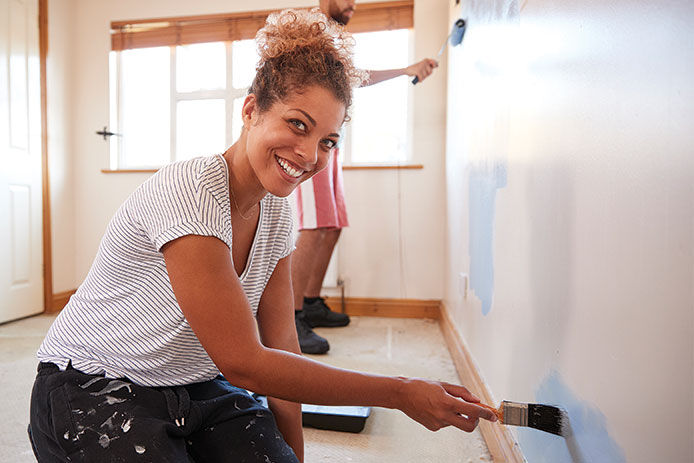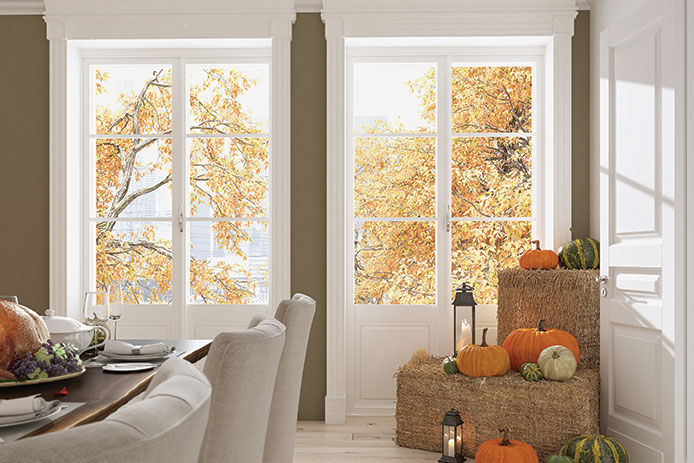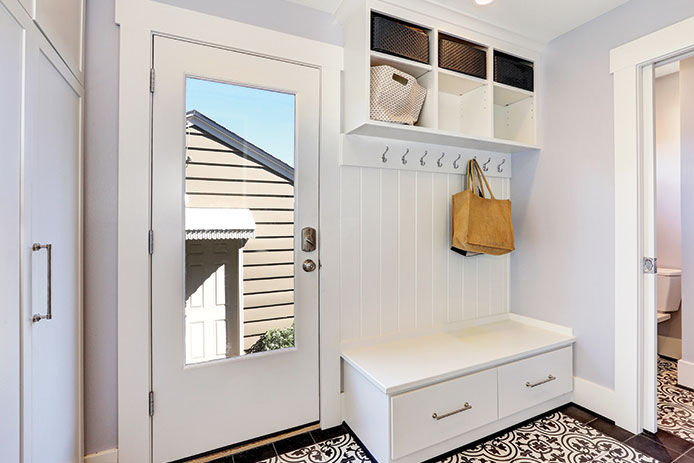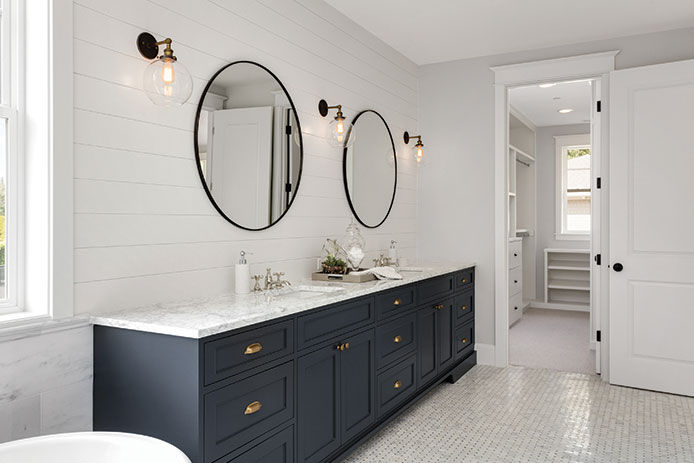|
|
Some high-end brands also add two intermediate options between the Eggshell and Satin options like Matte or Pearl. If you’re unsure how a particular paint brand names their sheen options, ask for finish samples or a reference card.

Painting is a routine part of owning a home. Depending on the air quality in your home and the colors you choose, you may need to paint anywhere from every three to 10 years. But it’s not enough to pick the right colors and pay for high-quality paint. You also need to use the right finishes for the right visual effects and durability demands. Most rooms will need more than one finish for different parts of the interior. Don’t be afraid to invest in a quart or two of a different paint to ensure that trim and other focus areas have the right finish. Here’s how to pick the right paint finish for each room in the house and every surface in that room.

The finish of any particular paint is technically known as its sheen. That is a fancy way to refer to the shine or gloss of the dried paint. The five levels of sheen for most brands are:
|
|
Some high-end brands also add two intermediate options between the Eggshell and Satin options like Matte or Pearl. If you’re unsure how a particular paint brand names their sheen options, ask for finish samples or a reference card.

Flat paint may sound boring, but it’s valuable, particularly for its hiding capacity. Thick and pigment-rich flat paints can disguise bumps, scratches, and other minor imperfections on the surface. It also absorbs most light rather than reflecting it, making it a good fit for brightly lit rooms where reflections can become overwhelming.
The biggest flaw of flat finish paint is its delicacy for washing or scrubbing. Trying to dab off a scruff or smudge can result in patchy paint and damage to the surface. This means that flat paint is best used in areas where high coverage is needed, but there’s little need for future cleanings, such as hallways, guest rooms, and closets.

Eggshell still has a low sheen and is relatively close to flat paint in appearance. However, it has a slight sheen that is often easy to miss. Yet, that extra shine is just enough to increase the paint’s ability to undergo cleaning. Eggshell can be better for most parts of the home that need the light-absorbing power of flat paint because of its improved cleaning resistance. When it comes to drying time, eggshell and flat definitely win over paints with more gloss to them. This is due to the amount of resin used in the mixture.
Eggshell is the finish most commonly used for walls. It’s also a good choice for ceilings in rooms where smoke or soot won’t be a problem. Avoid this finish for high-wear areas since it’s hard to clean without affecting its appearance.

Satin is the perfect middle ground when it comes to the sheen. It’s not shiny enough to reflect a lot of light or create glare issues, but it’s definitely a higher gloss than flat or eggshell paint. The extra resin mixed into this level of sheen gives it much better durability. Washing won’t be a problem with most satin paints, making it a good choice for the walls, baseboards, and chair rail molding in busy rooms. It also works well for kitchens, where walls need regular cleaning to keep oil and soot from building up.

Semi-gloss is shiny enough to catch the eye, making it ideal for highlighting areas like trim, ceilings, and doors. It’s also easier to clean than any of the lower levels of shine, making it a good choice for areas that see a lot of traffic. It may be a good choice for the walls and ceilings of areas low on direct light, helping brighten what light is available through reflectivity. It’s also a good choice for cabinets since it’s easily wiped down as necessary.

The shiniest, most reflective paint sheen is high gloss. It’s so shiny that it’s hard to use on large surfaces like walls without overwhelming a room. Limit it to spaces like bathrooms and mudrooms, where high shine can be a benefit rather than a bother. It’s mostly used for accent areas that can benefit from the contrast against less reflective paint choices. High gloss is the most washable paint finish and can be available in scrub-resistant formulas, making it the best choice for homes where messes are a problem.
Each room likely has areas that are best covered with a flat or eggshell paint and other spots that need the shine of a semi-gloss finish. Don’t be afraid to try different sheen levels and even different colors in the same room to create a lively and attractive look with the power of paint.
While do-it-yourself projects can be fun and fulfilling, there is always a potential for personal injury or property damage. We strongly suggest that any project beyond your abilities be left to licensed professionals such as electricians, plumbers, and carpenters. Any action you take upon the information on this website is strictly at your own risk, and we assume no responsibility or liability for the contents of this article.